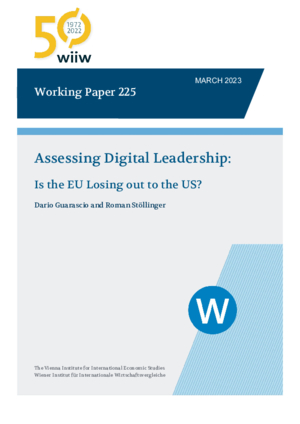Assessing Digital Leadership: Is the EU Losing out to the US?
Dario Guarascio and Roman Stöllinger
wiiw Working Paper No. 225, March 2023
46 pages including 8 Tables and 8 Figures
Since Leontief’s (1953) seminal work on the factor content of trade, the validity of the Heckscher-Ohlin-model has been judged not only on the basis of formal tests of the theory but also tested against prior expectation. In this vein, this paper uses the Heckscher-Ohlin-Vanek (HOV) approach to investigate whether supposed US leadership in the digital domain can be traced back to digital task endowments embodied in labour services. In a comparison between EU member states and the US, we find that the latter is more intensive in digital tasks than the EU and that this difference is explained by both an intensity-effect (US occupations being more digital-task intensive) and a structural component (relatively more digital-task intensive occupations). Viewed through the lens of the HOV theorem we find that the US is abundant in digital tasks relative to non-digital tasks, while the opposite is true for the EU. The standard tests for the predictive power of the HOV theorem are high and in line with the results for labour in previous literature.
Keywords: Comparative advantages, digitalisation, Heckscher-Ohlin-Vanek theorem, digital tasks
JEL classification: F11; F14; D57
Countries covered: European Union, US
Research Areas: International Trade, Competitiveness and FDI
